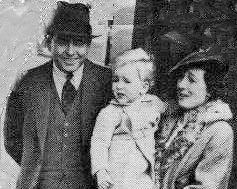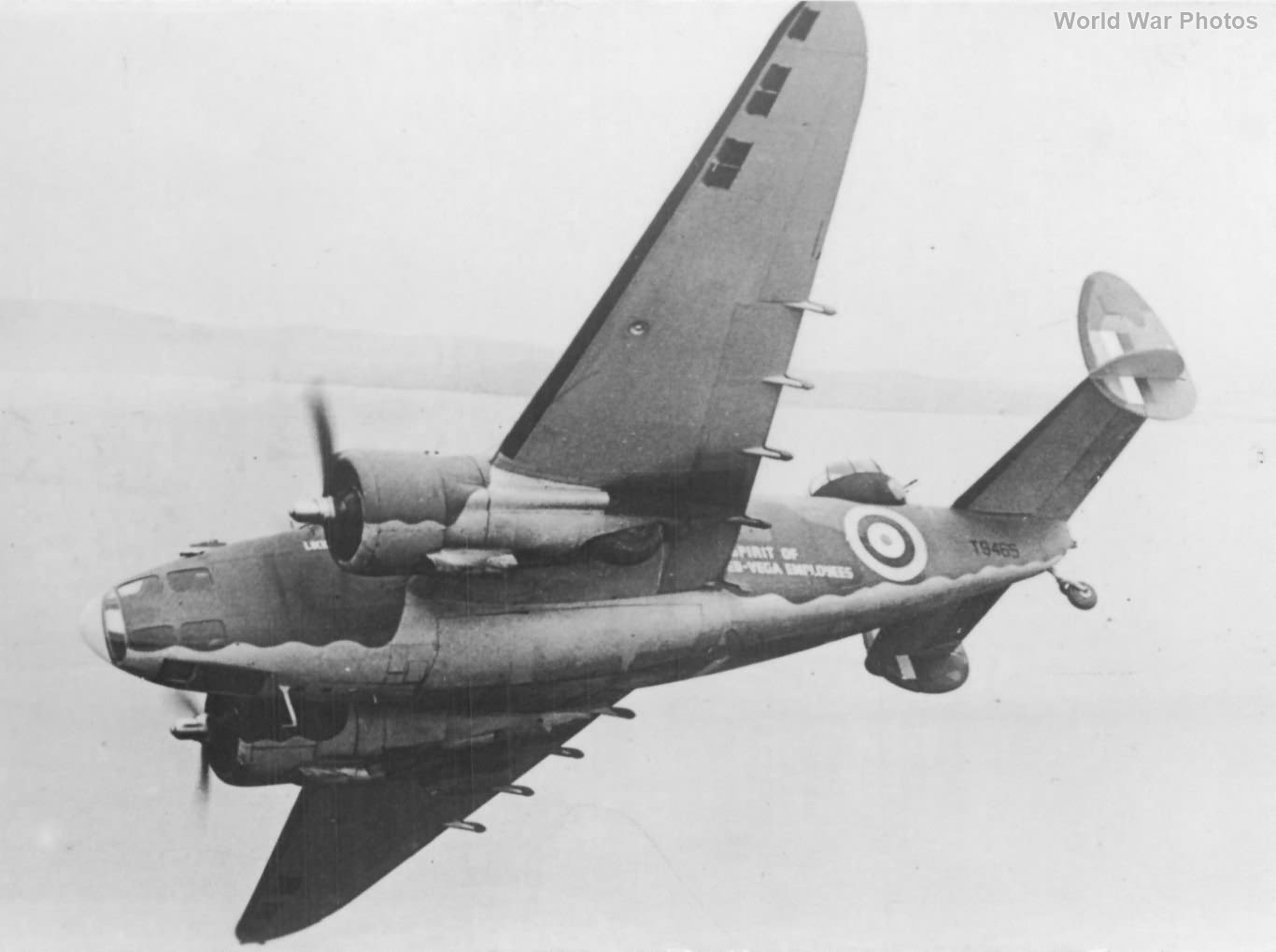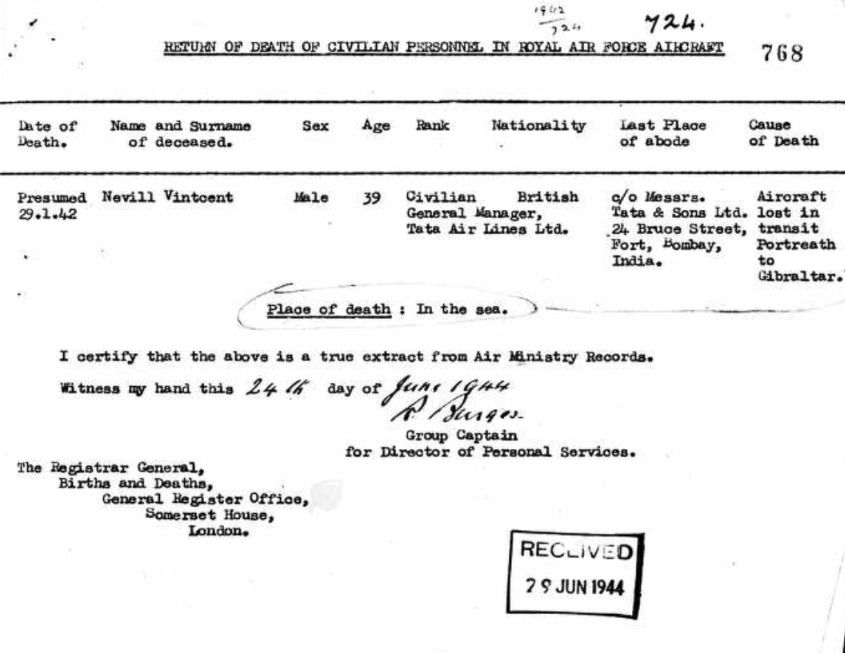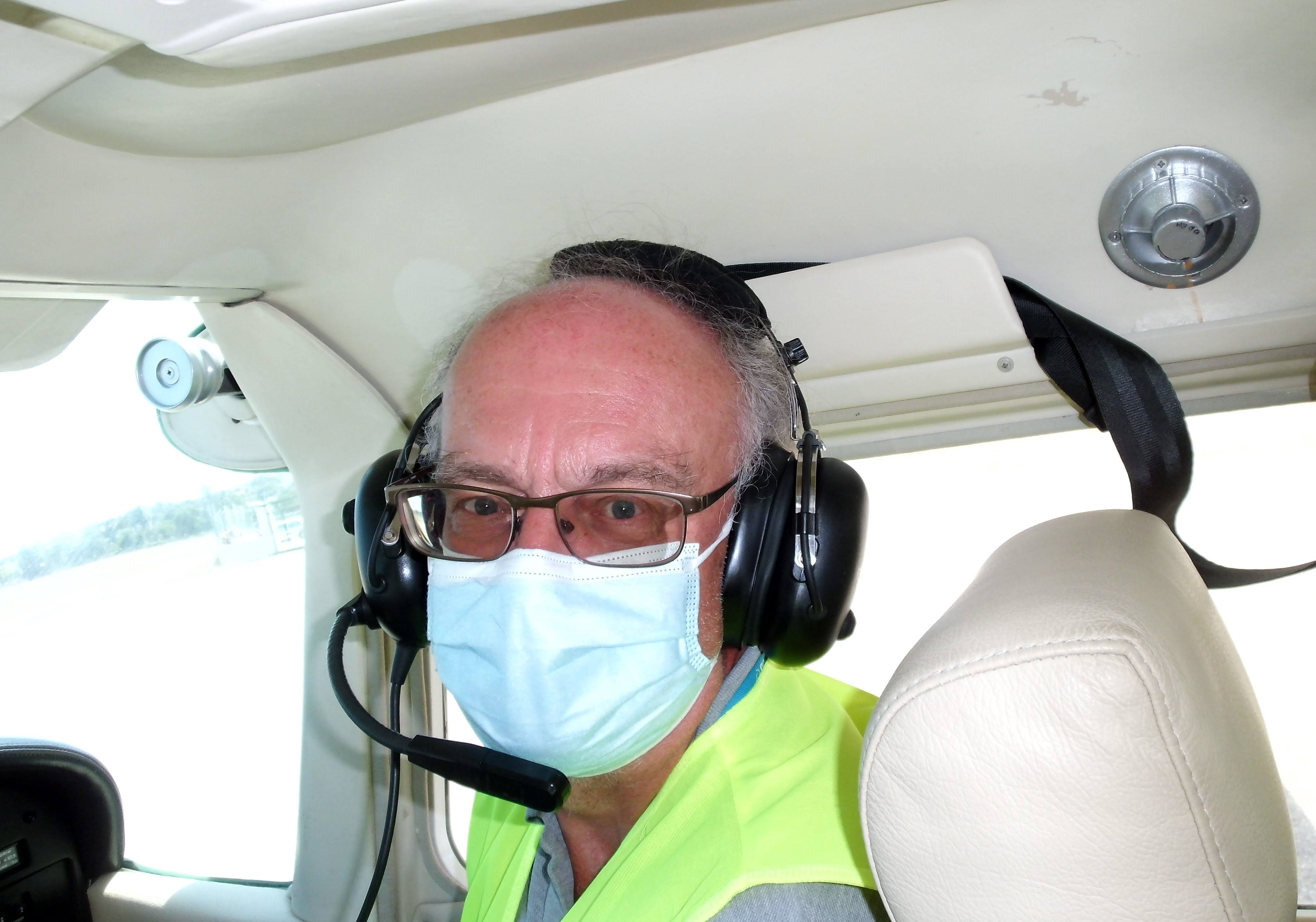| Nevill Vintcent OBE DFC | ||||||||||||||||||||||||||||||||||||||||||||||||||||||||||||||||||||||||||||||||||||||||||||||
|
|
|
|||||||||||||||||||||||||||||||||||||||||||||||||||||||||||||||||||||||||||||||||||||||||||||
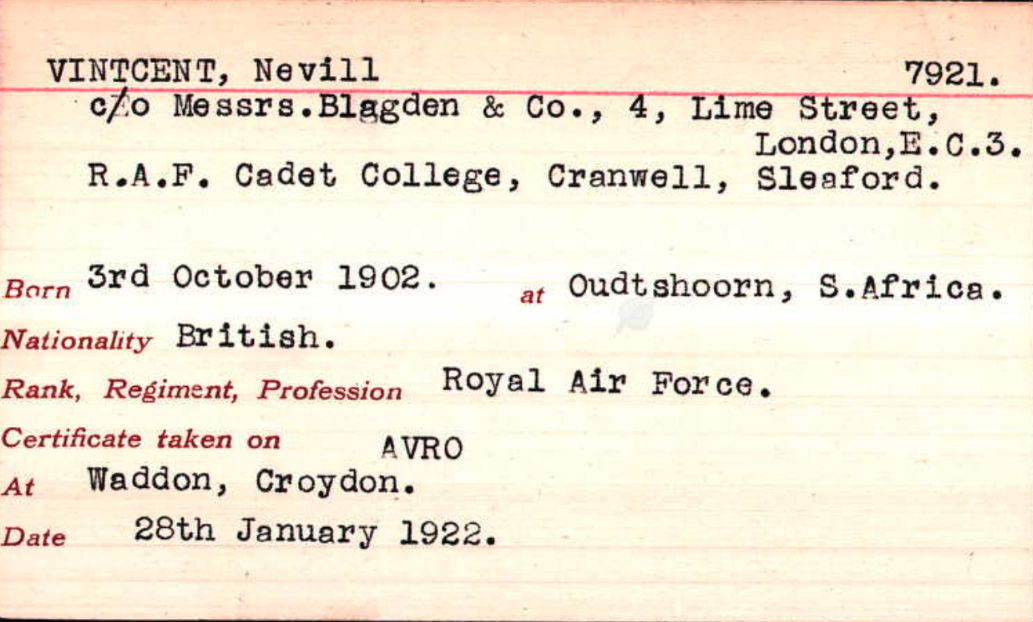 RAeC 1922 RAeC 1922 |
||||||||||||||||||||||||||||||||||||||||||||||||||||||||||||||||||||||||||||||||||||||||||||||
|
b. 3 Oct 1902 in Oudtshoorn, S Africa Father: Charles Henry Vintcent, a South African cricketing all-rounder who played in 3 Test matches beween 1889 and 1892. Mother: Lilian [Jackson] Nevill was commissioned in the RAF in 1922, and served in Kurdistan, Transjordania, Egypt, and Iraq, where he won the DFC in 1924 in unusual circumstances when he had to make a forced landing in the Arabian desert after engine trouble. As soon as the aircraft landed, the local tribespeople came on horses and began to attack. The aircraft had a machine gun at the front of the fuselage. Nevill jumped out of the aircraft, lifted the tail of the aircraft on his shoulders and turned the plane in circles, allowing his co-pilot to fire at the tribespeople and scare them away. He was also a boxing champion in the RAF, and came first in the Cranfield Sports Day "Putting the Weight" competition in 1921 (J. S. Newall, see later, came third). He left in 1926 "for more thrilling opportunities"; air survey work in India, Burma, the Federated Malay States and Borneo. He flew the first air mail from Borneo to the Straits Settlements. He worked as a pilot for the Air Survey Company. Here, from March 1927, is a photo of one of the DH9s owned by the company:
"The party is under the charge of Captain Durward, with Mr. Nevill Vintcent as pilot and Mr. C. R. Thorne as photographer. The scene depicted is the company’s temporary slipway and hangar at Chittagong, Bengal." In Burma, he flew the mail from Rangoon to Tavoy and Mergui, 245 miles, in 34 hrs. "The sea passage takes 48 hrs." And here they are in Port Swettenham, Malaya, in about June 1927:
In 1927 he entered the King's Cup Air Race, flying G-EBDK, a Martinsyde F6 belonging to Leslie Hamilton. However, a new formula to calculate handicap speeds was tried that year, with disastrous results; his aircraft was given 157 mph as a handicap speed, which was completely unrealistic, so he withdrew before the race.
In December 1927, he and F/O J S Newall prepared to fly two DH9s from Stag Lane to Singapore: (l to r) W S King (mechanic), Nevill, Mrs Wise Parker (passenger to Cairo), F/O J S Newall, and W A Charles (photographer). "The two machines will make a survey tour to Singapore, with the object of discovering and operating air routes of medium range between inaccessible but busy centres. Mrs. Wise Parker, seen in the centre of the group, has booked a trip as far as Cairo". Delayed by snow, they finally left on 9 Jan 1928 and duly delivered Mrs Wise Parker to Cairo on February 17, but only after they had been caught in a violent sandstorm in the desert the day before, forced to land and wait for three hours until it cleared. They reached Karachi on 26 April, and that seems to be as far as they got. Nevertheless, it was one of the longest flights of the time. They spent the next two years on holidays, giving joyrides, aerial photography and surveys, and became convinced that there was scope for commercial aviation in India. Nevill was "very enterprising and methodical. He would plan his next stop by sending his bearers ahead by train to check a suitable landing field and the passenger potential, having given the bearer sufficient money to telegraph back the details." He transferred to the RAFVR in December 1928. He owned G-AAXJ, a 1930 DH80a Puss Moth, which became VT-ACZ in India from Jul 1931 (and was written off in July 1935)
By 1932, Nevill was Deputy Director of Civil Aviation in the Public Works Branch of the India Office, based in Bombay.
He discovered that Imperial Airways was planning to extend its existing service to Karachi, to reach Calcutta and beyond. So, before Imperial started its service, Nevill put forward the idea of a plane service linking Karachi with Bombay, south India and Colombo, and approached many prominent people, including Russa Mehta, son of textile magnate, Sir Homi Mehta, for backing. The initial plan was to fly the airmail from Karachi to Bombay via Ahmadabad, fly southeast from Bombay to Madras via Bellary and Bangalore, and then return mails back to Karachi. Thereafter, Imperial would fly the mail east across India to Calcutta and then eventually to Australia. Nevill and Jehangir Ratanji Dadabhoy (J.R.D.) Tata came to an agreement to launch Tata Airlines to serve the new routes and Nevill became the chief pilot and manager of the new airline, and started preparations. In April 1932, he flew his Puss Moth G-AAXJ via Mandapam to a landing strip at the racecourse in Colombo. This was a historic day for Ceylon as it was the first time an aeroplane had landed there; up to this point the people of Ceylon had only seen seaplanes. Nevill gave joy rides for 10 days and then, on the 7 May, started for Bombay at 6.00 am carrying a bundle of 'Times of Ceylon' newspapers, arriving in Bombay at 4.30 pm.
The following month, Nevill flew his boss Sir Fredrick Tymms, the Director of Civil Aviation in India, to Ceylon to check the route and the landing area of the racecourse. After this visit, it was decided to construct a more suitable aerodrome, with a hard surface, at Ratmalana. Finally, on 8 October 1932, an Imperial Airways aircraft flew from London to Karachi. J R D Tata, in a de Havilland Puss Moth, took the mail on to Bombay, where Nevill then took over for the leg to Madras via Bellary (an outpost of the British Army, which had a small garrison), and Bangalore, arriving on 16 October. The first westbound flight left Madras the following day. The new runway at Ratmalana was ready by 1935, and a TATA Puss Moth flown by Lt Tyndale-Biscoe, with a Ceylonese passenger on board, landed there in February. On the return journey they carried air mail to Madras, to connect with the Madras-Karachi TATA service.
Tata Airlines grew steadily before WWII, acquiring these aircraft:
His wife Pamela and their 1-year-old son Charles travelled (first class) back to England from Bombay in April 1934 on P&O's SS Rajputana and then, in December 1934, they flew back to India with Nevill in Avro 642/4m VT-AFM, the 'Star of India', first registered 13 Sep 1934, built for the personal use of the Viceroy.
They arrived in Delhi on December 8. After being overhauled, the aircraft was flown to Calcutta where the Viceroy was staying.
"Flight" reported the progress of the airline: "The Tata Air Lines are a branch of the activities of the great steel concern, Tata Sons, Ltd. The director in charge of their flying interests is Mr. Jehangir R. D. Tata, a member of the Bombay Flying Club, and the detailed management of the service is in the hands of Mr. N. Vintcent. " By May 1934, the Tata service from Karachi to Bombay and Madras had been running for nearly 18 months, and it had "achieved the wonderful record of 100 per cent efficiency in running to schedule." In August 1934, "Lord Willingdon, Viceroy of India, and the Countess of Willingdon left Croydon for India by Imperial Airways, Ltd., after two months in England, and a day or so previously Mr. Nevill Vintcent, the Viceroy’s personal pilot, arrived from India by K.L.M." In the following October, 'Flight' reported that "Mr. Nevill Vintcent, D.F.C., manager of the Tata Air Line, is now on a visit to this country, and is able to report all well with the weekly service Karachi-Bombay-Madras. Though the service is unsubsidised it is now showing a profit, and the weekly loads of mails are growing too big for the capacity of the "Puss Moth” with which the line is operated. Mr. Vintcent is on the look-out for a type which has greater capacity and which will be suitable in other respects. He has no objection to wooden construction. It may not last quite so long as metal will do but then, he says, a wooden machine will probably last until the weekly weight of mails has outgrown its capacity and the line has to seek a still more capacious machine.
On 18 Jan 1937, Nevill flew Mr. Walters (the Postmaster General of India), Mr. Bewoor (from the postal department) and Sir Frederick Tymms to Ratmalana using one of Tata's Miles Merlins. This was a fact-finding mission to extend the airmail service from Madras. The same year, he flew Sir Victor Sassoon, President of the Federation Aeronautique International, and his assistant Captain Freeman-Thomas, to the Ratmalana aerodrome. He sailed from Southampton to New York on the 4 April 1937, in 'SS Europa', and then again from Southampton to the USA on the Queen Mary, arriving on 17 Jul 1939. After war was declared, Nevill proposed to build an aircraft factory in India. He flew to Hawaii with his colleague from Tata Chemical Ltd, Mr Kapilram Vakil, 11 to 13 Aug 1940. He sailed to the USA again, this time from Glasgow, arriving 27 December 1940, giving his cousin, J E Davis, as his contact in the USA. He flew from San Francisco to Hawaii on the 15 Jan 1941, and was then in Canada until 9 Jul 1941. During this time, he was in regular discussions with the minister of aircraft production, Lord Beaverbrook, and eventually secured a licence to build an aircraft factory in Pune for war purposes. On 29 Jan 1942, he boarded an RAF transit flight in RAF Portreath in Cornwall heading initially to Gibraltar, but the aircraft was not seen again. Another RAF aircraft had come under attack on the same day, and investigators eventually reached the conclusion that the aircraft must have been shot down and had crashed into the sea.
d. 29 Jan 1942 in Hudson AM946 "Flying Officer D J R Gee, Sergeant D J C Pitcher, Sergeant J Cadden, Sergeant J A Bolle, Mr N Vincent (Tata Air Lines): missing believed killed; Hudson AM946, Overseas Aircraft Delivery Unit; aircraft crashed at sea during a transit flight between Portreath and Gibraltar, 29 January 1942."
His daughter later said that “Pamela was not willing to believe that Nevill had been killed. Her belief was that he was in detention in some country, and he would return one day. But, even two years after the incident, there was no news of him,” Probate was finally granted in 1944: "Nevill Vintcent, of Lyndewode House, Bomanji Petit-Road Bombay India died on or since 29 January 1942 at sea. Probate Llandudno 8 November to Pamela Vintcent widow. Effects £10215 6s 9d"
Pamela, with her 3 children, left Mumbai and flew to England in 1944 and subsequently lived with her sister, Celia Johnson. Tata Airlines became a public company and later changed its name to Air India. Pamela m. 1950 in Chelsea, Ralph Wesley Dennis; they lived in London. Nevill's grandson Henry became a glider pilot, but died in a skiing accident. Ralph d. in 1990, Pamela 1993 in Reading. |
||||||||||||||||||||||||||||||||||||||||||||||||||||||||||||||||||||||||||||||||||||||||||||||
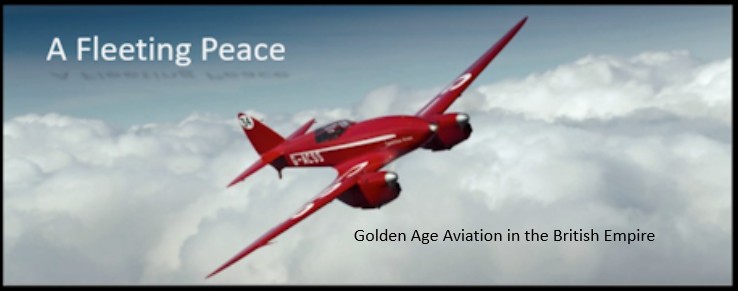
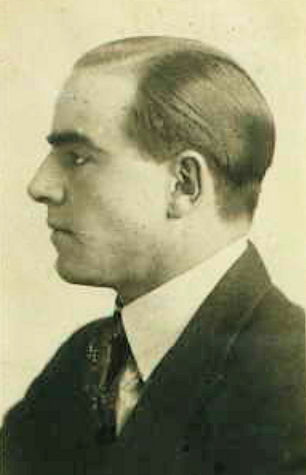 RAeC 1922
RAeC 1922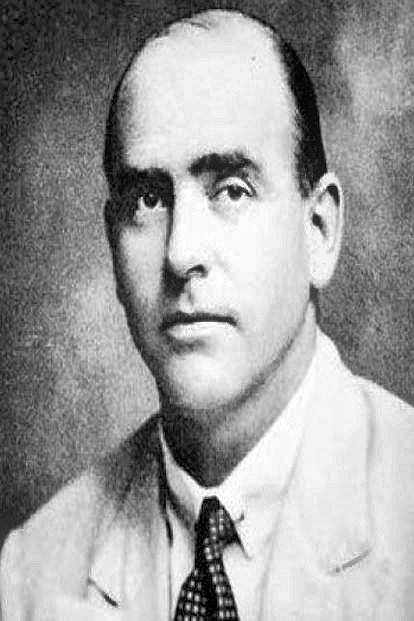 Ancestry
Ancestry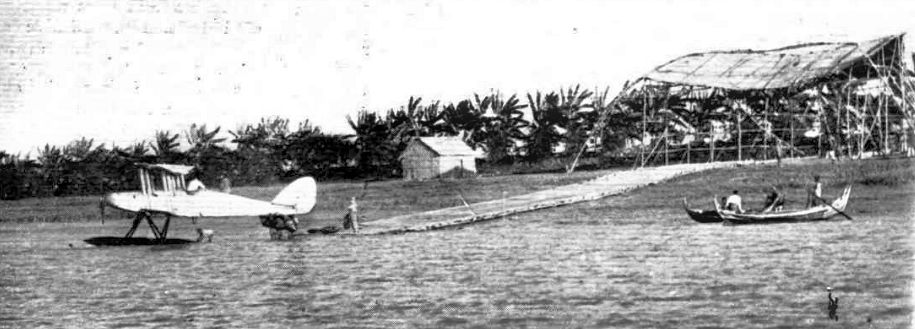
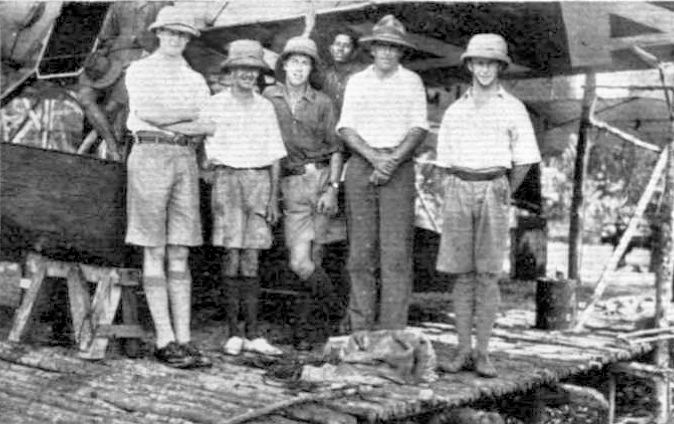 "Flight"
"Flight"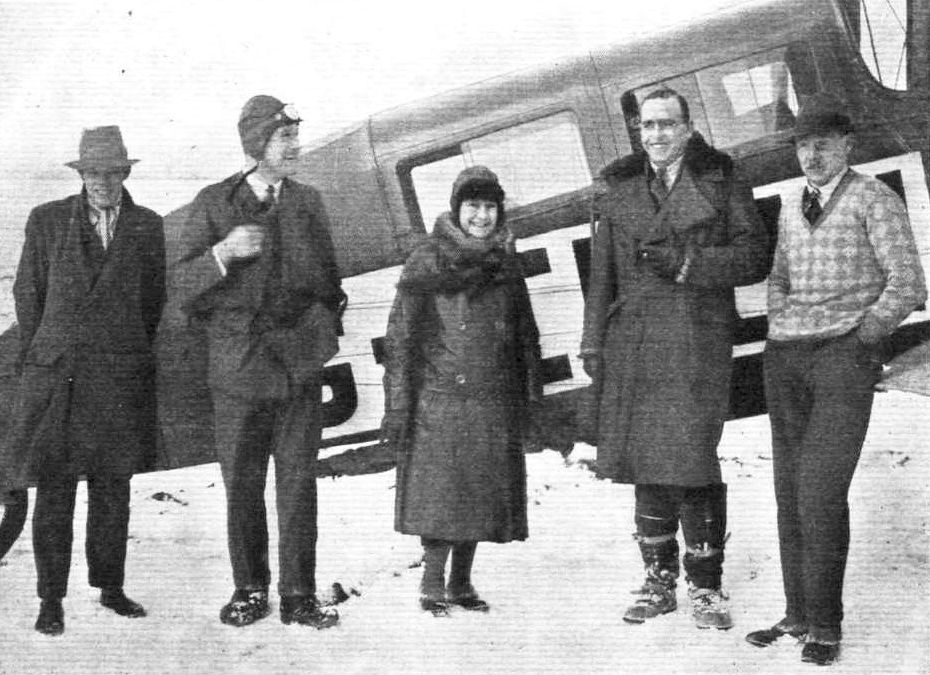 5 Jan 1928
5 Jan 1928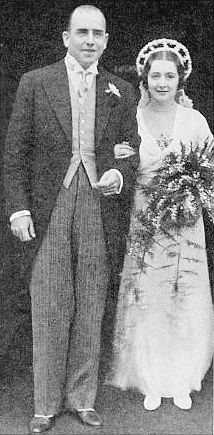

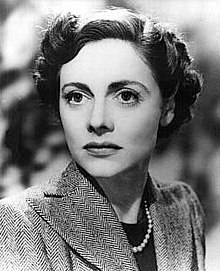
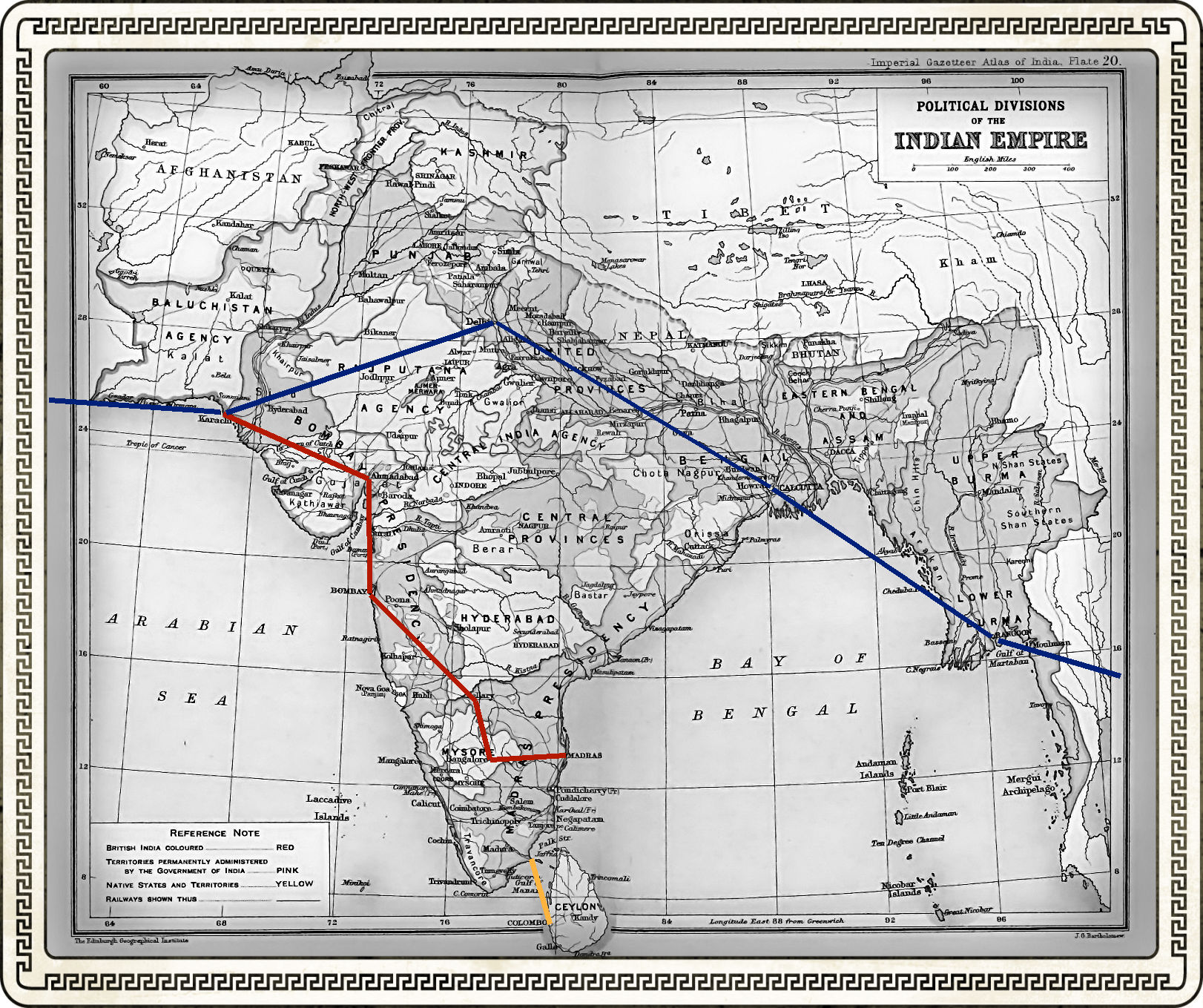
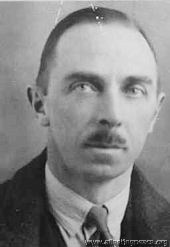 Sir Fredrick Tymms
Sir Fredrick Tymms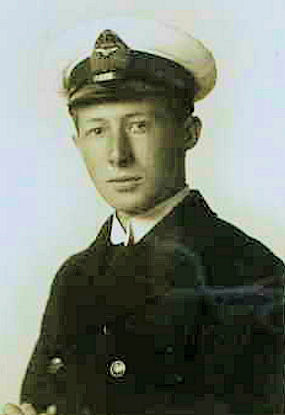 Harold l'Estrange Tyndale-Biscoe MBE
Harold l'Estrange Tyndale-Biscoe MBE